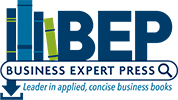The Gig Mafia: How Small Networks and High-Speed Digital Funds Transfers Have Changed the Face of Organized Crime
$34.99Organized crimes (e.g., weapons trafficking, drug distribution, white collar crime) persist globally due primarily to the power of modern information and communication technology (e.g., computer-based networks in the open and dark webs) to facilitate organization and the enhanced liquidity provided by electronic transfers (in effect, e-capital) to distribute criminal proceeds in the same covert and high-speed manner used by the so-called legitimate commercial enterprises. Offshore banking in tax secrecy and tax haven jurisdictions facilitates both the socially accepted process commonly known as tax avoidance, for example, and the notorious practice commonly known as tax evasion: the former is lawful; the latter is illicit.
The dirty secret of how transnational organized economic crime persists lies in global finance, especially transactions using the U.S. dollar in safe havens (e.g., the West uses the Cayman Islands; the East uses Cyprus). Regulators, monitors, auditors, and other specialists in conducting transaction review do not readily and timely tell the difference between high valued transfers that involve true sales of licit goods from high valued transfers that involve the laundering of proceeds from human trafficking, drug distribution, arms sales, and so on.











